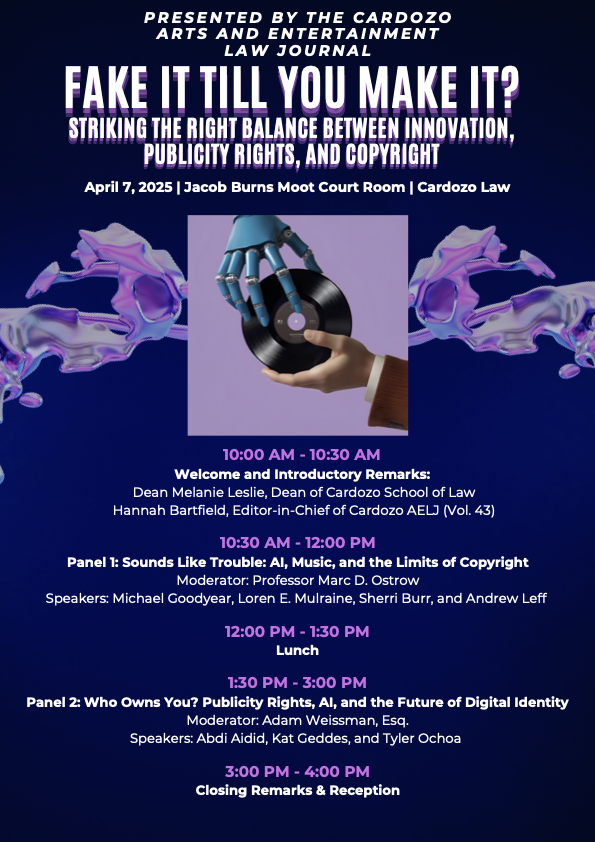US Supreme Court Reopens Door for Restitution of Nazi Stolen Painting
ByDavid Seen
- On
The looting of works of art during World War II represents one of the most significant cultural thefts in history, with the Nazi state seeking to enrich itself by seizing property of the people it persecuted.[1] The Nazis systematically seized thousands of invaluable works of art and cultural assets from museums, galleries, and private collections across Europe. The methods of seizure ranged from barefaced theft to indirect means such as forcing individuals to sell their property to finance their flights into exile.[2] Due to the fact that many works of art were not looted directly but seized through indirect means, property handed over or sold under duress are nonetheless considered to be cultural property expropriated as a result of Nazi persecution.[3] Even decades later the repercussions of these thefts continue to reverberate through courtrooms around the world as rightful heirs continue to seek restitution for their family’s stolen heritage.
Earlier this month the Supreme Court revived one of the longest running Nazi art restitution cases and remanded the case to the U.S Court of Appeals for the Ninth Circuit in California for further consideration after the passage of a new California state law.[4] This saga begins in 1926 when Lilly Cassirer Neubauer, a member of a prominent German Jewish family, inherited “Rue Saint-Honoré Après-midi, Effet de Pluie” (“Rue Saint-Honoré in the Afternoon, Effect of Rain”), an impressionist oil painting by Camille Pissarro.[5] In order to obtain exit visas for her and her husband, Lilly was forced to “sell” the painting in 1939 for 900 Reichsmarks to Jackob Scheidwimmer, a Berlin art dealer who had been appointed by the Nazi government to obtain the painting.[6] Not only was the sale price well below the actual value of the painting, but the proceeds from the sale were deposited into a bank account that Lilly could not access—in other words it was stolen. A few short years later in 1943, the painting was sold at the Lange Auction in Berlin to an unknown purchaser for over 95,000 Reichsmarks.[7] The painting’s location would then become a mystery for decades following the sale.
In the aftermath of the war, the Allies passed Military Zone Law No. 59 (“MGL No. 59”), which established the process for restoring property to victims of the Nazis’ looting.[8] Lilly submitted a claim under MGL No.59 seeking restitution of or compensation for the painting and the Court of High Restitution Appeals of the Allied High Commission published a decision confirming that Lilly was the rightful owner of the painting.[9] After the German Federal Republic regained its sovereignty, Germany instituted a law governing the claims related to property looted by the Nazis. Lilly initiated a claim under this law against the German government seeking compensation based on the wrongful taking of the painting. At the time of this action, the location of the painting was still unknown to all the parties and Lilly settled her claim for monetary compensation. However, she did not waive her right to seek restitution or the return of the painting.[10]
Unbeknownst to Lilly, the painting had actually made its way to the United States and was sold to an art collector based in Los Angeles in 1951.[11] The painting remained in the United States for the next twenty-five years until it was sold to Baron Hans Heinrich Thyssen-Bornemisza of Lugano, Switzerland (“the Baron”) in 1976 for $300,000.[12] The Baron possessed considerable knowledge of the art market, which he acquired over many years of collecting art work and undoubtedly knew there had been extensive looting of artwork by the Nazi regime.[13] In fact, although he had never specifically done so, the Baron’s family had a history of purchasing art confiscated by the Nazis.[14] In 1988, the Baron and the Kingdom of Spain reached an agreement that ultimately resulted in the painting being loaned to Spain and displayed in the Thyssen-Bornemisza Museum in Madrid, Spain.[15] The Kingdom of Spain eventually purchased the painting from the Baron in 1993, and Claude Cassirer, an heir of Lilly, discovered the painting was on display at the museum at some point in 2000.[16]
This discovery initiated the beginning of a two-decade long dispute between the Cassirer family and the owner of the museum, the Spanish government, over who was the rightful owner of the Pissarro painting. In early 2024, the U.S Court of Appeals for the Ninth Circuit ruled against the family and stated that Spanish law, not California law, applied to the case. As a result, the museum was the rightful owner and had “prescriptive title” to the painting after buying it in 1993.[17] This seemed to be the end of the road for the Cassirer family, until Governor Newsom signed Assembly Bill (AB) 2867, which was introduced in response to the Ninth Circuit’s decision.[18] AB 2867 mandates “that California substantive law shall apply in action to recover fine art. . . including those covered by the Holocaust Expropriated Art Recovery Act [“HEAR”] of 2016, brought by a California resident or their heirs.”[19]
According to Spanish law, the museum acquired “good title” in 1996 after having possession of the painting for three years. However, Claude Cassirer did not discover the museum possessed the painting until 2000. Under California law, where “a thief cannot convey good title to stolen works of art, [] the true owner cannot be divested of ownership without actual discovery of their rights in, and the location and possessor of, the artwork.”[20] Therefore, because there was not “actual discovery,” the museum would not have “good title” if California law was applied instead. However, this will be the first time the viability of AB 2867 is tested, so it is yet to be seen if the Cassirer family will ultimately prevail.
David Seen is a 2L Staff Editor on the Cardozo Arts and Entertainment Law Journal
[1] Nazi-looted Cultural Property: Basic & Overview, German Lost Art Foundation, German Lost Art Found., https://kulturgutverluste.de/en/contexts/nazi-looted-cultural-property [https://perma.cc/2V9M-BAZ9] (last visited April 5, 2025).
[2] Id.
[3] Id.
[4] Christopher Kuo, Supreme Court Revives Long-Running Nazi Art Restitution Case (Mar. 14, 2025), https://www.nytimes.com/2025/03/14/arts/design/supreme-court-pissarro-nazi-art-restitution.html [].
[5] Cassirer v. Thyssen-Bornemisza Collection Found., 69 F.4th 554 (9th Cir. 2024), https://878449.fs1.hubspotusercontent-na1.net/hubfs/878449/Ninth%20Circuit%20Decision%20–%20Jan.%209%2c%202024.pdf. https://perma.cc/3TRZ-5GPV].
[6] Cassirer v. Thyssen-Bornemisza Collection Found., No. CV 05-3459-JFW (Ex), 2019 WL 13248668 (C.D. Cal. Apr. 30, 2019), https://www.lootedart.com/web_images/pdf2019/CassirerThyssen-JUDGMENT%2030.4.19.pdf. [https://perma.cc/N6C4-UM7G].
[7] Id.
[8] Id.
[9] Id.
[10] Id.
[11] Id.
[12] Id.
[13] Id.
[14] Id.
[15] Id.
[16] Id.
[17] Kuo, supra note 4.
[18] Governor Newsom signs legislation to help Holocaust survivors recover art stolen by the Nazis, State of Cal. (Sept. 16, 2024), https://www.gov.ca.gov/2024/09/16/governor-newsom-signs-legislation-to-help-holocaust-survivors-recover-art-stolen-by-the-nazis/ [https://perma.cc/8F5R-TVFV].
[19] Assem. B. 2867, 2023–2024 Reg. Sess. (Cal. 2024).
[20] Assem. B. 2867, 2023–2024 Reg. Sess. (Cal. 2024).




